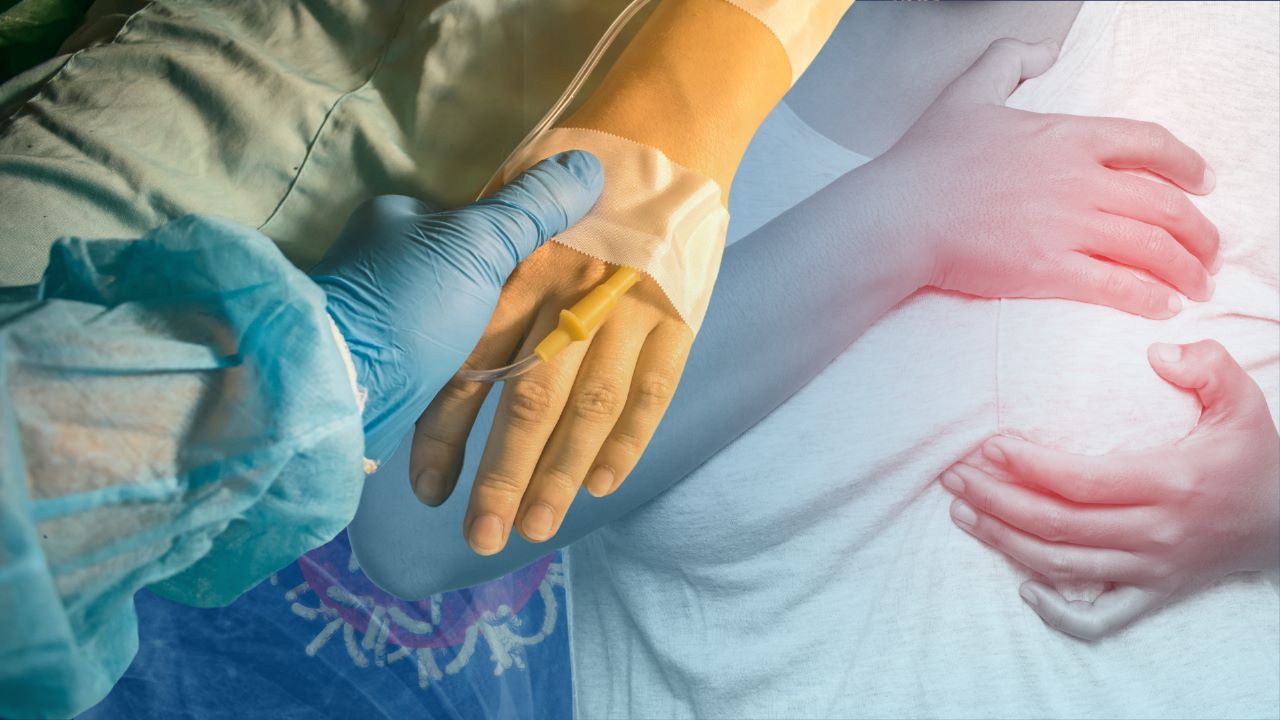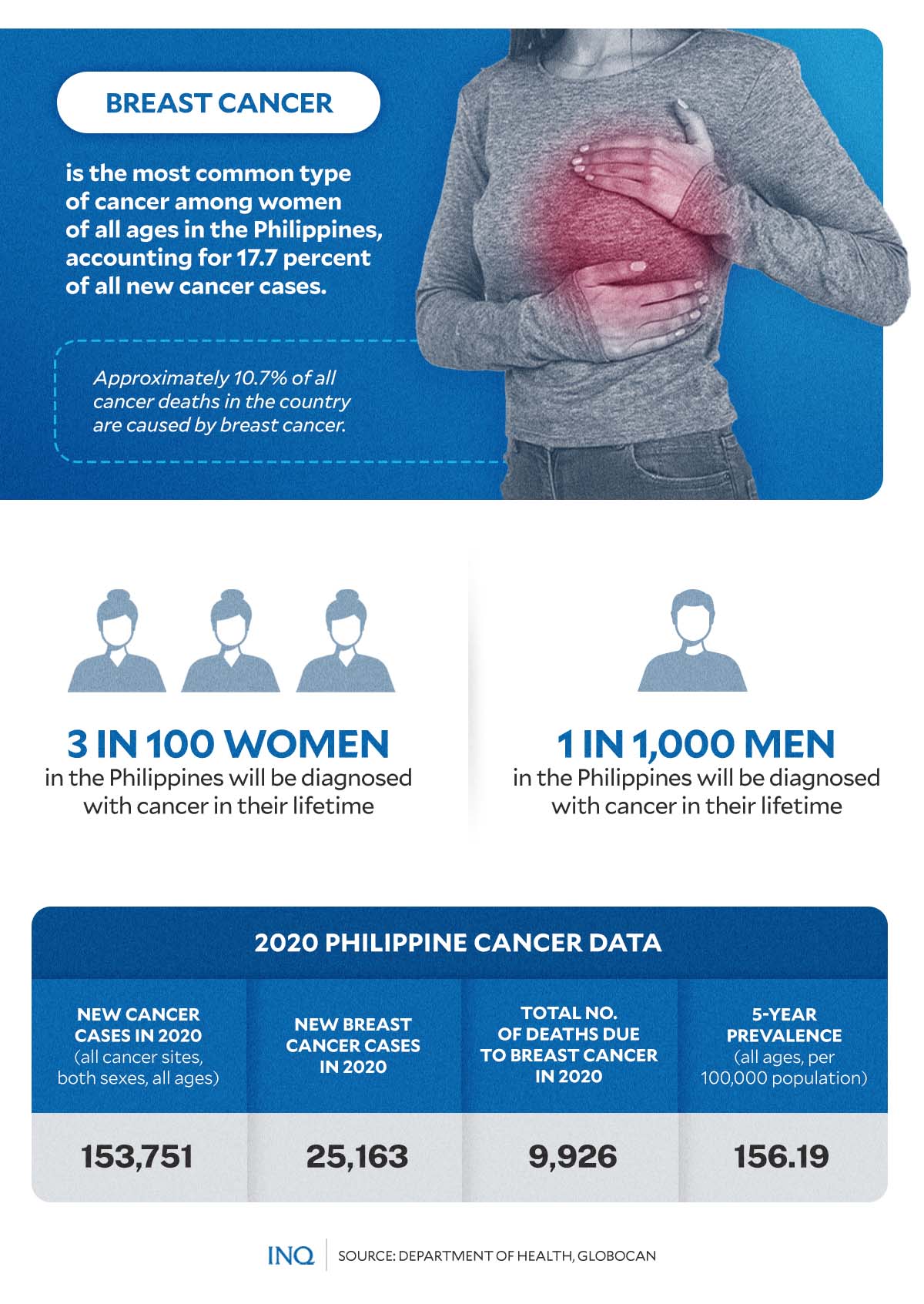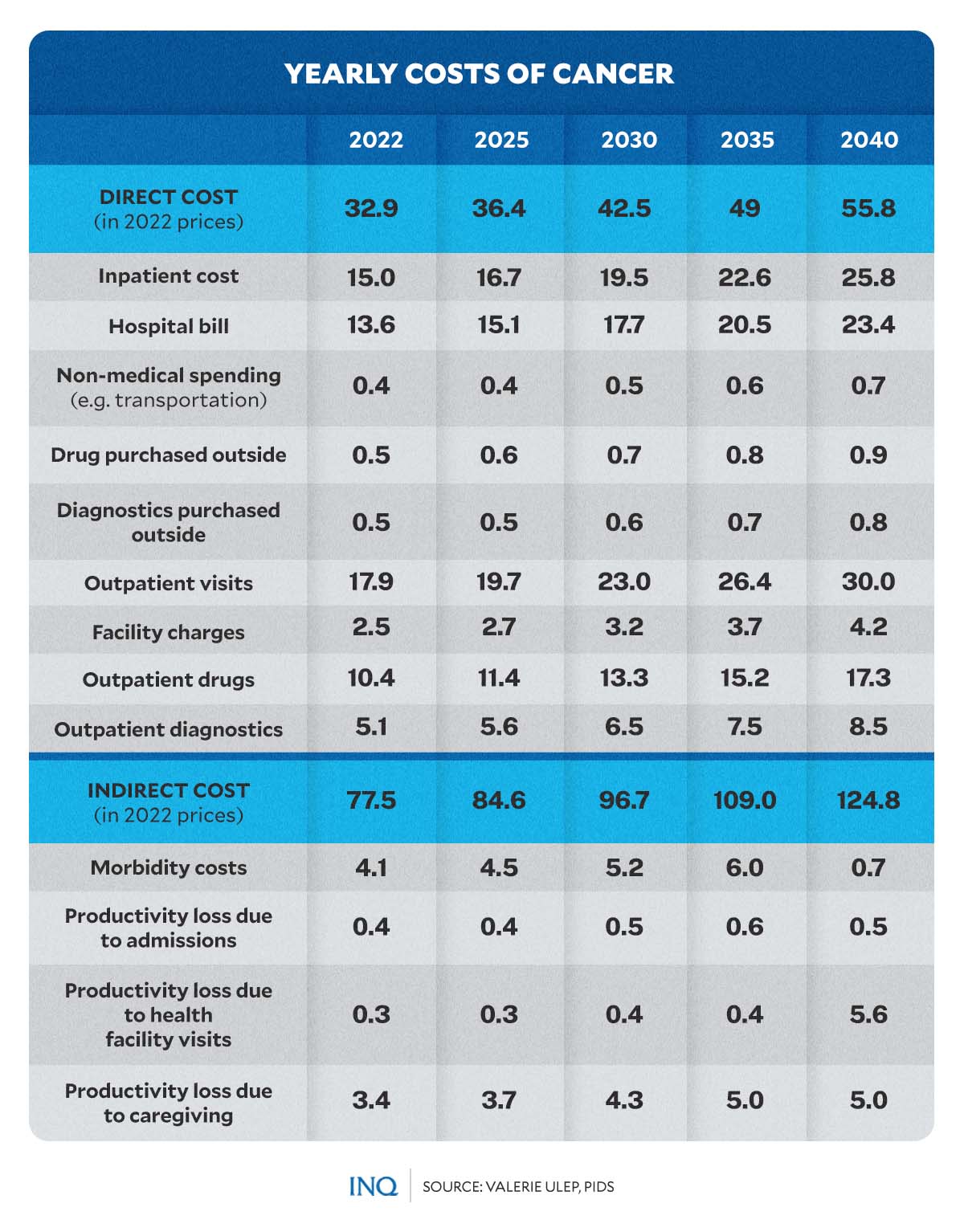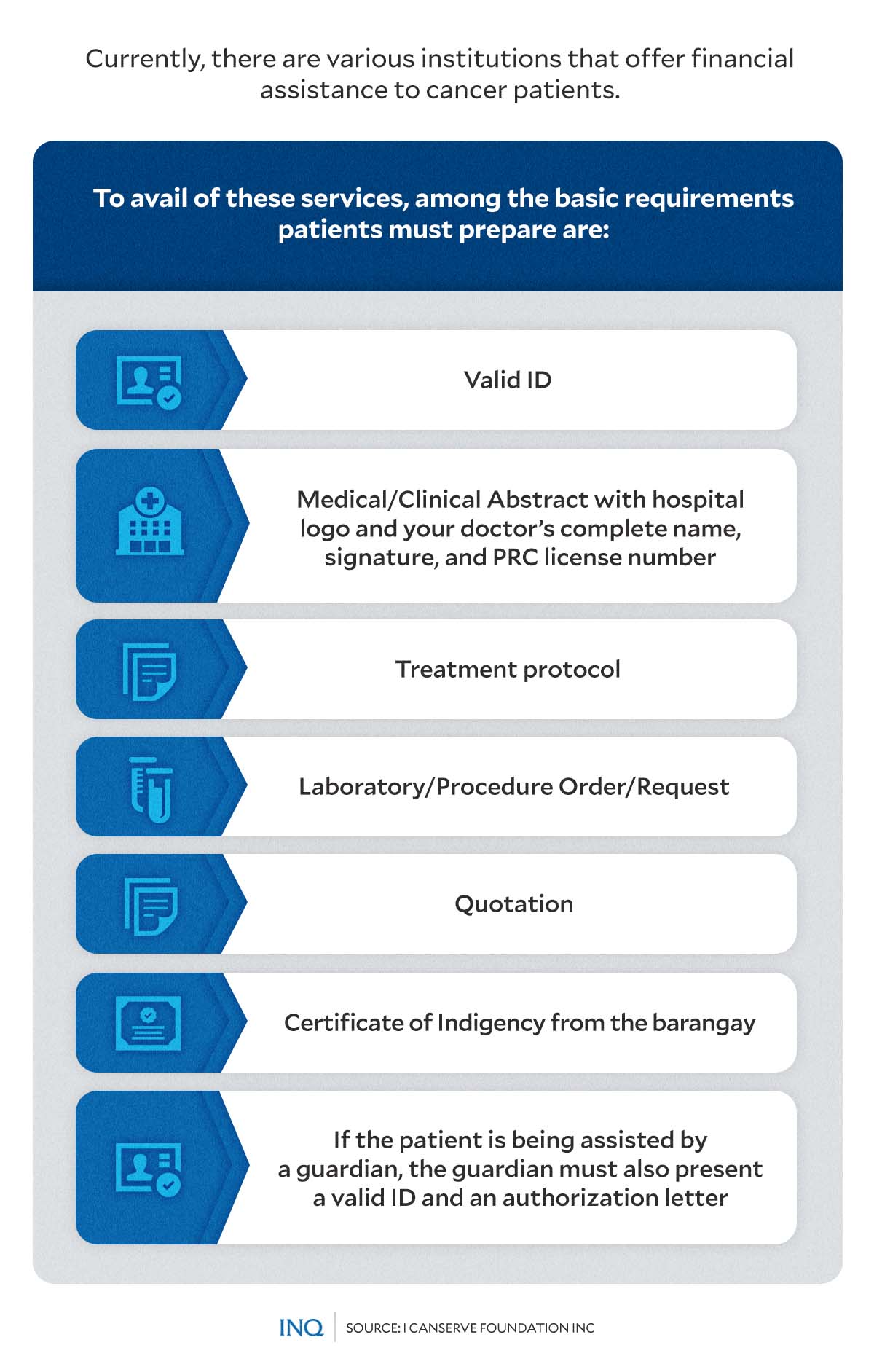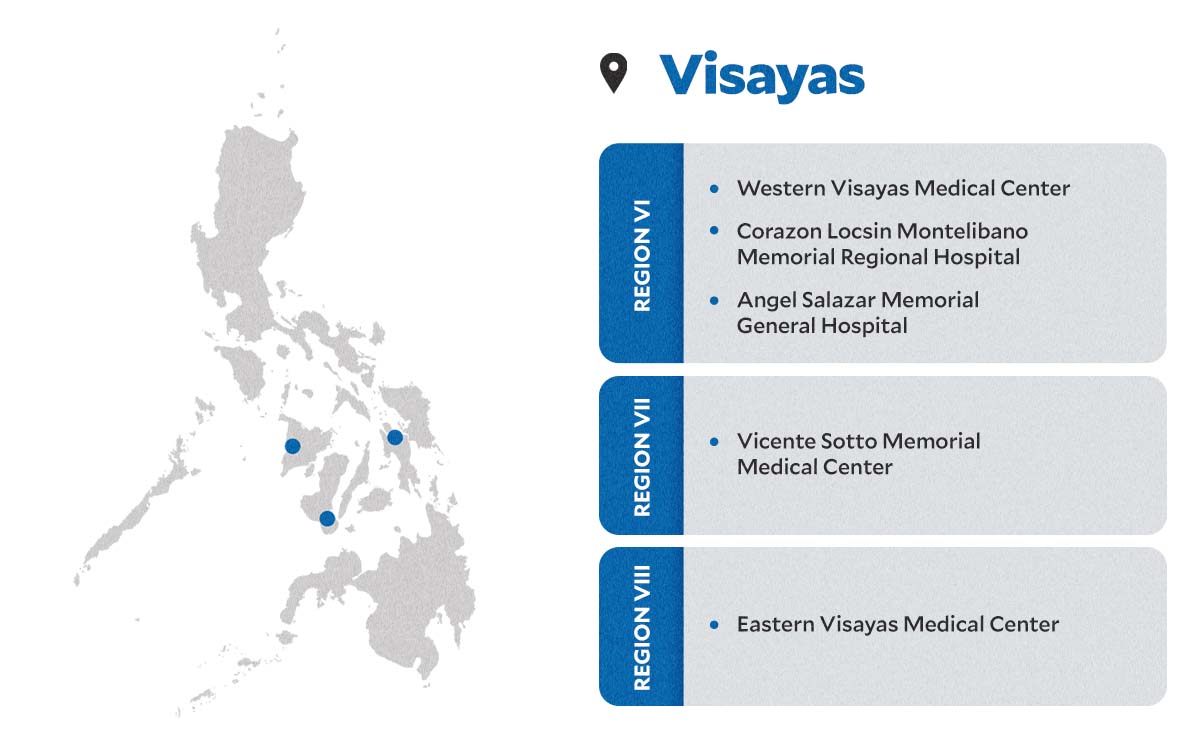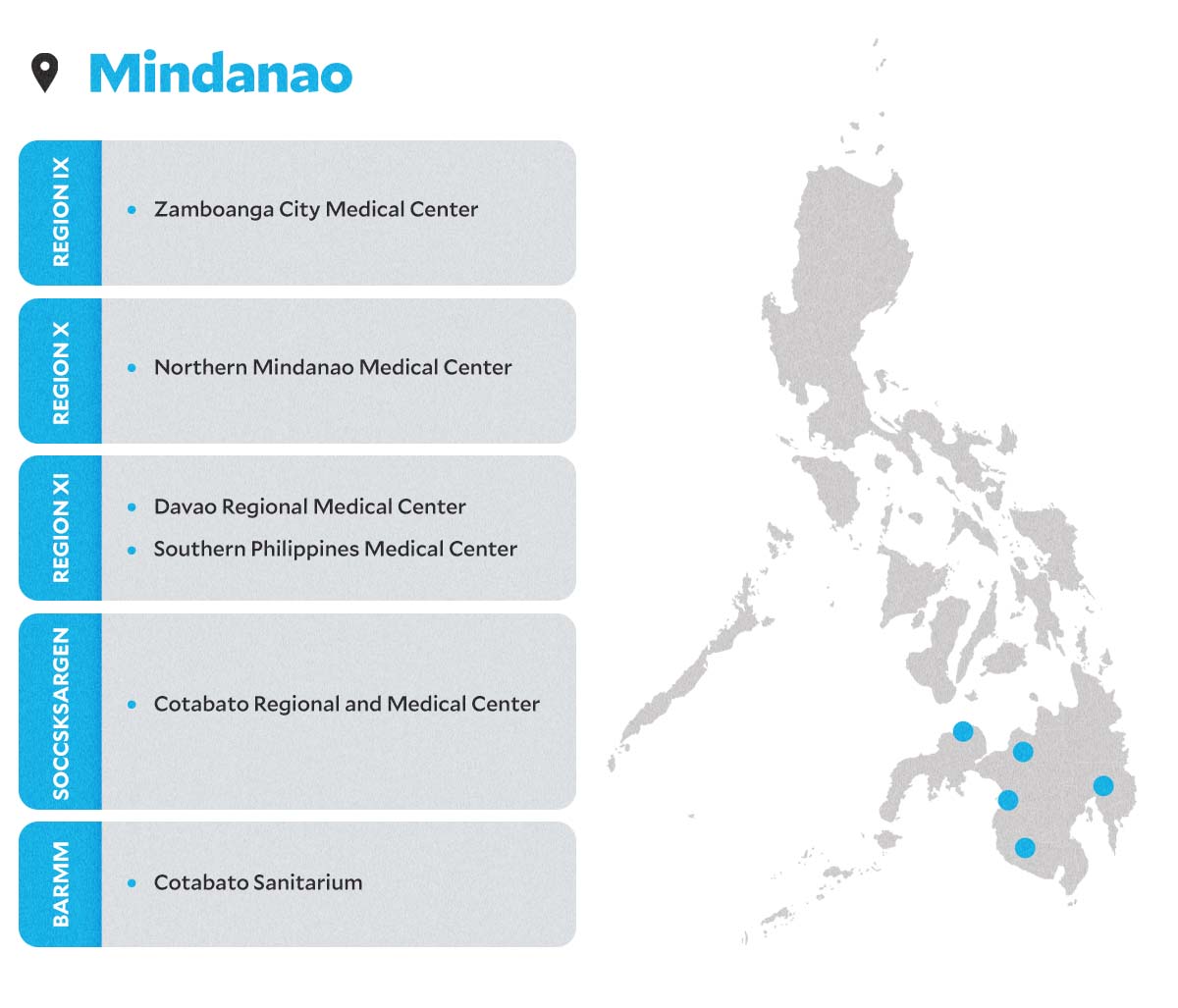Cancer burden: Draining people’s lives, pockets
(First of three parts)
MANILA, Philippines—“Para sa tulad naming mahihirap, ang hirap pag may sakit kasi lalong masyadong sampal na, ganon.” (For us poor, it’s hard to be ill. It’s a big slap in the face).
That’s how 34-year-old Catherine Lauron summed up what she and her family have gone through so far to continue supporting and caring for her mother-in-law, Virginia Domondon-Pancho, who was diagnosed with early-stage breast cancer in late 2019.
Within a few months of her diagnosis, Pancho’s cancer quickly progressed to Stage 4. Despite several cycles of chemotherapy and various medications, the cancer cells have since spread or metastasized to other parts of her body.
Breast cancer is the most common type of cancer among women of all ages in the Philippines, accounting for 17.7 percent of all new cancer cases. Approximately 10.7 percent of all cancer deaths in the country are caused by breast cancer.
Article continues after this advertisementThe latest data from the Global Cancer Observatory (Globocan) registry showed that in 2020, there were 27,163 breast cancer cases in the Philippines, and 9,926 Filipino women had died of the disease.
Article continues after this advertisementAccording to the Department of Health (DOH), three in every 100 women in the country will be diagnosed with breast cancer in their lifetime. While women have a higher risk, the Philippine Cancer Society noted that breast cancer doesn’t spare men—at least one in 1,000 men will have breast cancer in their lifetime.
Among patients with early-stage breast cancer, up to one-third will develop metastatic breast cancer — the most serious form of the disease. It occurs when the cancer has spread to other body parts, like the bones, skin, brains, or other organs.
Metastatic breast cancer (Stage 4) and locally advanced breast cancer (Stage 3) are considered advanced breast cancer. The survival rates for women with advanced breast cancer are known to be lower than those with earlier stages of the disease.
Still, Pancho, Lauron, and their family remain hopeful as they continue to fight the disease and go through the breast cancer journey together.
Studies showed that the 5-year relative survival rate for Stage 4 breast cancer is around 22 percent — a huge difference from approximately 72 percent for Stage 3 breast cancer.
Although she understands that her mother-in-law’s condition may already be beyond cure, Lauron said that she and her family insist on persevering and pushing through with all the available treatment options.
Lauron told INQUIRER.net in between sobs that she often reminds her mother-in-law that although getting cured of the disease might no longer be a goal for them, there is still a more significant reason to keep on fighting.
“Sinasabi ko nga, ‘eh ano naman kung ‘ma kung hindi mawawala ‘yang kanser. Ang mahalaga lumalaban tayo at nadudugtungan ‘yung buhay mo. Okay lang ‘yun ‘ma, mangyari na ang mangyari, at least ginawa natin lahat’,” Lauron shared.
(I often tell her: ‘So what if your cancer will not disappear? What’s important is that we keep on fighting, and your life is prolonged. It’s okay. What happens, happens. At least we did all we could.)
However, she admitted that amid their resilience and firm resolve, her family struggled through hardship in their cancer journey. Among these were the enormous costs of cancer, particularly that of treatment procedures and medication.
“Ang mindset kasi [ay] kung wala kang pera, wala kang magagawa. Pero hindi eh, marami talagang pwedeng paraan,” said Lauron.
(The mindset is that you can’t do anything when you don’t have money. But no, there are many possible solutions out there.)
The cancer burden
In the Philippines, the cost of cancer treatment can range from ₱120,000 to as much as over ₱1 million. The estimated price of chemotherapy cost per session, depending on the cancer type, starts at ₱20,000 up to over ₱120,000.
“To say that the cancer burden is overwhelming is an understatement,” said Kara Magsanoc-Alikpala, founding president of ICanServe Foundation, citing the Cost of Illness Study by the Philippine Institute for Development Studies (PIDS).
The study, led by PIDS senior research fellow Dr. Valerie Ulep, said the annual economic cost of cancer in the Philippines is equivalent to 1 percent of the country’s gross domestic product (GDP).
It also found that in 2020, the estimated total direct cost of cancer has already reached ₱32.9 billion. These include medical or hospitalization expenses and non-medical expenses for inpatient and outpatient visits.
In over ten years, Ulep projected that the direct cost of cancer could increase to ₱55.8 billion.
Indirect costs, or expenses that are not directly related to cancer treatment but arise due to the disease, are at least P77.5 billion in 2022 and are projected to increase to P124.8 billion by 2040. This included the value of productivity loss or income lost due to hospitalization and caregiving tasks.
“The indirect costs are so much higher than the direct costs, just when we thought that the economic burden of cancer is huge, it’s actually overwhelming seeing what we call the invisible indirect costs,” said Alikpala.
“The growth of the cost of illness of cancer is faster than the economic growth. In fact, the growth in cancer spending in the country is one of the fastest among all diseases, and unfortunately […] this is a trend that will continue the long term,” she continued.
Draining patients’ pockets
“It’s really very expensive. It’s costly to have cancer in this country… I think that’s why many patients are very much afraid of being diagnosed with cancer,” said Alya Honasan, a journalist and breast cancer survivor, during a previous seminar hosted by the Philippine Press Institute (PPI) in partnership with Novartis.
An analysis by Ulep found that many cancer patients in the country and their families still rely on their hard-earned money to pay for cancer treatment and other necessary medical services.
The PIDS study noted that out-of-pocket expenses mainly cover direct costs of inpatient and outpatient visits in hospitals.
For outpatient spending in public hospitals, it is estimated that 29 percent of direct costs—treatment, hospital charges, laboratory costs, and drug costs—are shouldered by patients.
On the other hand, patients seeking treatment in private hospitals shoulder 64 percent of outpatient expenses.
This was the case for Lauron and her family when her mother-in-law was diagnosed with breast cancer.
“‘Di namin inakala, ‘yung savings namin na-provide na namin […] pero […] na sa starting point pa lang pala kami,” Lauron recalled.
(We had already given up our savings and did not expect that we were still at the starting point then.)
Another huge setback was when the COVID-19 pandemic hit, causing many businesses to halt or completely stop their operations. This caused massive layoffs, which hurt many workers, including Lauron’s husband and their relatives.
“Nabenta ‘yung motor ng kuya [ng asawa ko]. Nasanla na namin ‘yung prangkisa ng traysikel. Basta ‘yung mga pwedeng ma-dispose ng asawa ko saka ng kuya niya talagang na-dispose kasi para sa kanila naman gamit lang ‘yung mga ‘yun eh. Pwede naman kitain ulit,” Lauron added.
(My husband’s brother sold his motorcycle. We pawned the franchise for our tricycle. They dispose of anything that can be disposed of because, for them, those are just material things. We can earn those back.)
“‘Yun nga kaya medyo nag struggle kami noon kasi nga ang hirap talaga financially,” she continued. (We really struggled at that time because the situation was difficult financially.)
Lauron said she and her family continue to pitch in money for some of her mother-in-law’s medicine and vitamins. At the same time, financial assistance from various government sources covers some of the cancer treatment costs.
The PIDS study showed that PhilHealth financial protection covers a significant portion of inpatient spending for patients in public hospitals (64.23 percent) and private hospitals (49.43 percent).
However, Ulep stressed that out-of-pocket still covers a massive chunk of inpatient spending for cancer patients getting treatment in public hospitals (28.52 percent) and private hospitals (43.56 percent).
“The economic burden of cancer in the Philippines is substantial. Improved social and financial protection is critical, coupled with access to early detection and effective treatment, could significantly decrease costs while improving overall disease prognosis,” Ulep concluded in the study.
A costly disease
But the expenses for cancer do not stop once the treatment procedures, like chemotherapy and surgery, are over.
“It’s really costly. When you’re diagnosed, you need to get checked every three months and every six months once your cancer improves,” said Honasan.
Lauron is pushing for better financial assistance for indigent cancer patients.
“Ang worse pa, ‘yung magaling ka na [pero] bumabalik pa [‘yung kanser],” she said. (What’s worse is that you’re already feeling better but the cancer could still come back.)
“Dapat mas paigtingin pag dating sa financial assistance lalo para sa mga breast cancer patients na wala talagang kakayahan para mas maunawaan nila [‘yung sitwasyon] at mas madali sia makakilos,” Lauron noted.
(There should be better financial assistance for indigent breast cancer patients so they can understand and navigate their situation better.)
“Kagaya ko, kagaya ni mama, mahirap na samin ‘yung mga pa roo’t pa rito. Mas mahirap pa isipin [para] sa amin kung papaano pa ‘yung susunod na mga gamutan,” she added.
(It’s already hard for us to go back and forth [the hospital for treatment]. It’s even harder when we think about the costs for the subsequent treatments.)
Currently, there are various government programs and institutions that aim to provide financial assistance to cancer patients. These include:
- Malasakit Center
- PhilHealth’s Z Benefit Package
- Philippine Charity Sweepstakes Office’s (PCSO) Medical Access Program (MAP)
- Department of Social Welfare and Development’s (DSWD) Assistance to Individual Crisis Situation (AICS)
- Department of Health’s (DOH) Cancer Support and Palliative Medicine Access Program (CSPMAP)
- However, some of these programs could only be availed of by patients diagnosed with a particular cancer stage.
For instance, PhilHealth’s Z Package offers a P100,000 benefit to PhilHealth members and their qualified dependents who are diagnosed with stage 0 to 3A breast cancer patients only.
The CSPMAP of the health department provides free chemotherapy for various cancer patients, including breast cancer patients diagnosed with stage 0, stage 1, stage 2, stage 3A, and stage 3B.
Expand benefits through NICCA
To provide financial assistance and better cancer care for more cancer patients, Alikpala urged the government to expand the benefit packages to cover all cancer stages and types.
“The government, for one, should expand all the benefit packages. There are very good benefit packages. They should be expanded to include stage 4 and to include screening,” she said.
“It’s not free to get checked if you are sick. To avail of the free services, your cancer should be at an earlier stage,” she added.
One way to do this, according to Alikpala, is through the full implementation of the National Integrated Cancer Control Act (NICCA) — a landmark legislation signed in 2019, which aims to provide comprehensive, accessible, and affordable cancer care to all Filipinos from all walks of life.
“This is just my point of view since I’ve been to so many barangays. Even two pesos is very expensive for the poor […] There’s so much work to be done to make sure that we have benefit programs for the poor because they really can’t afford and they can’t complete treatments,” said Alikpala.
“Even the middle-class go broke, really broke. We forget the middle class, but they, too, have a hard time coping with the cost of illness. It’s really no joke,” she added.
Under Rule 5 of the Implementing Rules and Regulations (IRR) of Republic Act No. 11215 or NICCA, PhilHealth is instructed to expand its benefit packages to include:
- Primary prevention
- Screening/early detection
- Diagnosis, referral, optimal treatment, and care,
- Surveillance, rehabilitation, supportive care, treatment assistance, palliative care and pain management,
- Survivorship follow-up care, reintegration, and hospice care
- End-of-life care for all types and cancer stages in adults and children.
The law also mandated PhilHealth to develop innovative benefits that can improve cancer treatment journeys and reduce costs of care.
Rule 5 also highlighted the Cancer Assistance Fund (CAF). According to DOH, this will provide assistance by funding pertinent cancer control services, like diagnostics, therapeutic procedures, treatment, and cancer medicines.
Currently, there are eight priority cancer types to be assisted by CAF:
- Breast cancer
- Childhood cancer
- Gynecologic cancer
- Liver cancer (including colorectal and other digestive tract cancer)
- Adult blood cancers
- Head and neck cancers (including thyroid)
- Lung cancer
- Prostate, renal, and urinary bladder cancer
So far, CAF is available in only 31 access sites across Luzon, Visayas, and Mindanao.
Aside from PhilHealth’s benefits for cancer and the DOH’s CAF, NICCA also has a provision that pushes different government agencies and the local government units (LGUs) to “encourage and prioritize the underprivileged and marginalized persons living with cancer to undergo the necessary treatment and care.”
NICCA mandated that the DOLE and CSC issue cancer policies to form part of employee benefits.
The law also required the Insurance Commission to mandate coverage of counseling, testing, and screening by health maintenance organizations or HMOs.
It also mandated paid cancer-related leaves for employees and for them to qualify for sickness and disability benefits from the SSS and GSIS.
“All of these can contribute to lowering the costs [of cancer treatment],” said Alikpala.
(This story was published with the support of the Philippine Press Institute, Novartis, and ICanServe Foundation.)
TSB
(Part two: NICCA’s promises, full implementation, call to action.)
